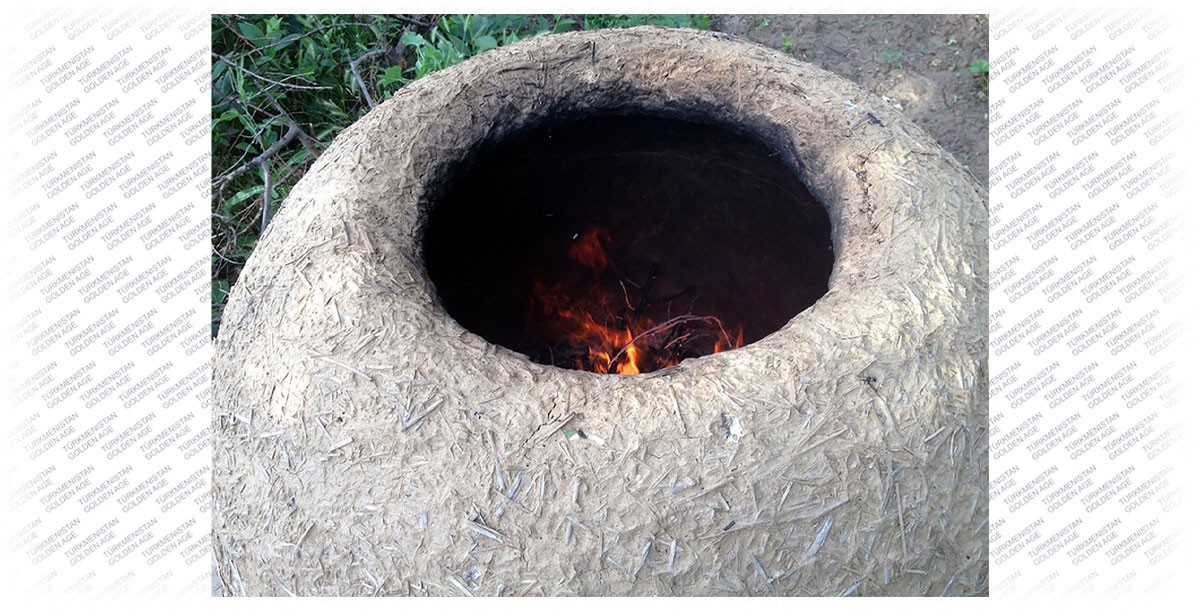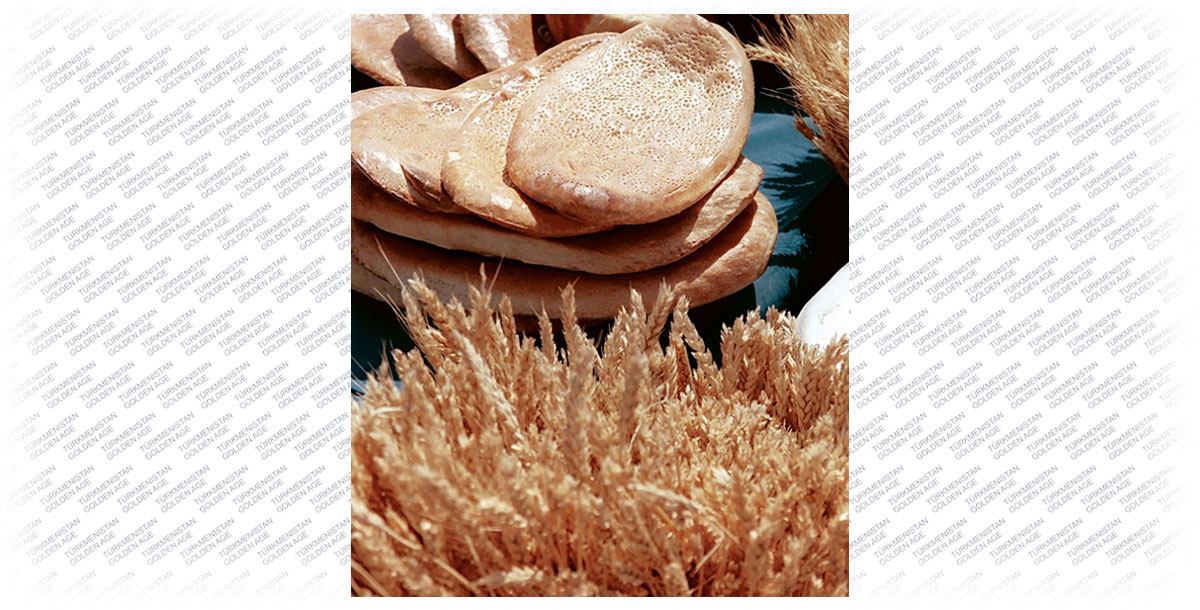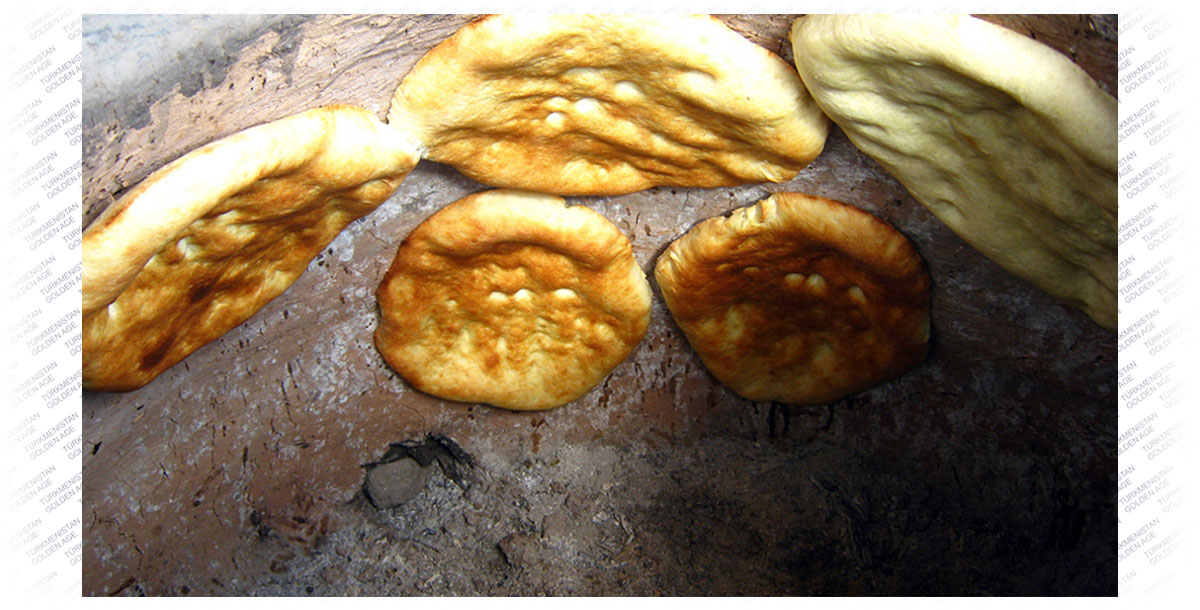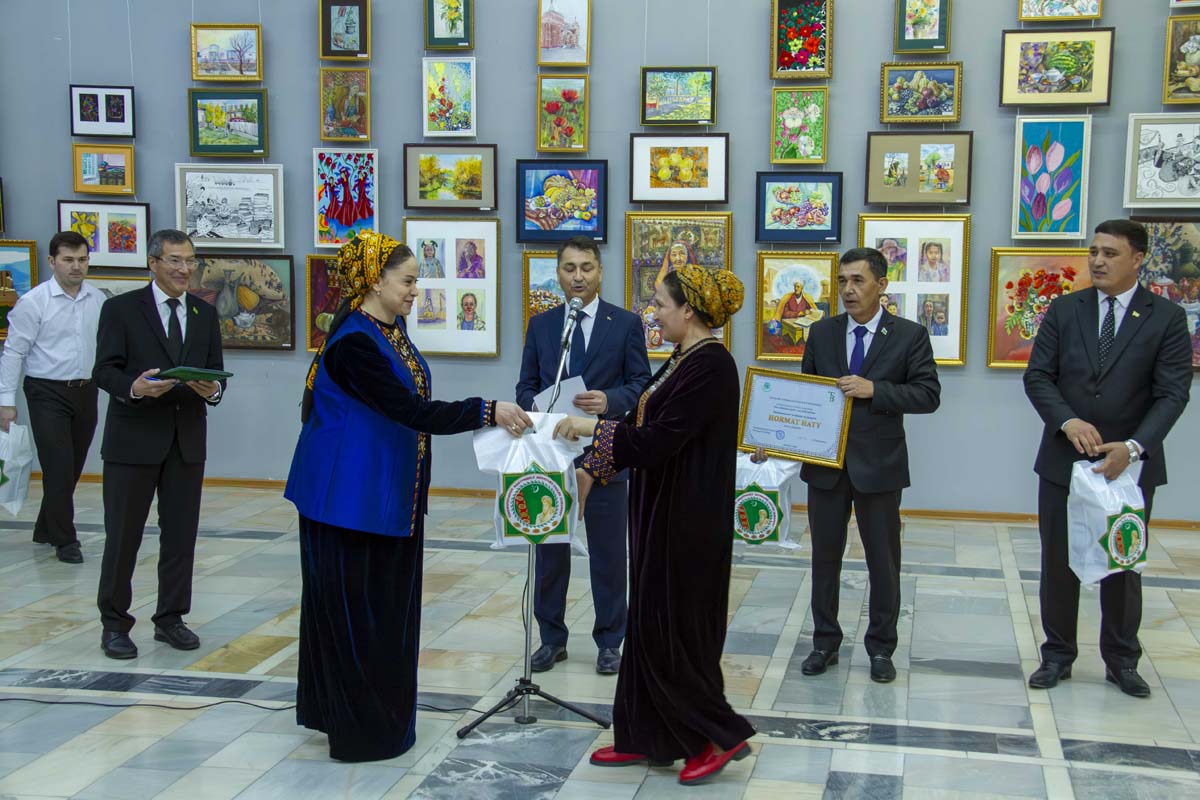Every Turkmen home, which has a small yard, has round clay oven, the tamdyr. Tamdyr has existed in life of peoples of Caucasus, East and Central Asia throughout the history. It is hard to say how old this ancient invention is, but much probably, the tamdyr appeared at the dawn of time when having decided to make a difference in their predominantly meat menu, people have learned how to cultivate the wheat and make flour out of it. The tamdyr has come after the skewer. During excavations of ancient country of Margiana on the territory of modern Turkmenistan, archaeologists have discovered the remains of clay ovens, which ancient ancestors of Turkmens used to bake a bread. Many things have changed for the past millenniums, the world itself has changed but this simple construction, which were preserved in its original shape, have remained the same.
It seems to be a simple construction from the first glance. All you need to build it are water, clay and straw. However, it is not that easy as it seems to be. The secrets of making tamdyrs were passed from generation to generation. People who build the tamdyrs are called ‘tamdyrcy’.
The process of making the oven has its own rules, an entire cycle of consecutive works. One missed link will ruin the whole process. For example, a clay. It preferably to be a kaolin, homogenous compound clay sot it does not crumble in one’s hands. Experienced masters know the places where such clay ca be taken and use it for decades. Armenian, Kazakh, Uzbek, Tajik and other tamdyrs are not much different from each other. Turkmen tamdyrs are the same.
The clay is kneaded with feet adding wheat straws and sometime sheep or camel wool to the mixture in order to increase heating characteristics of the oven. Such tamdyr serves for many years and does not shatter from the heat. The balls are made from kneaded clay, which are smashed against the ground just like a dough against the table to make them honogenious and after are made rolls out of the balls. A perfect circle is drawn on the ground and clay rolls are one on each other around the circles until the walls of around 1 meter height are built.
In order to give spherical form to the oven and make certain thickness, the walls are beaten with wooden bars. The mouth of the tamdyr is decorated with clay rand. The surface of the oven is polished so it will be smooth. After, the tamdyr is being dried up. The dried tamdyr is placed on the ring made of bricks leaving small hole - an ash pit, at the bottom. Sometimes, the tamdyr is surrounded by another layers of bricks from the outside for better heat keeping. The oven is ready.
Before the baking of bread, chorek in Turkmen language, wood is placed inside the oven and burn it for several hours burning the surface. After all wood and soot are completely burnt out and the walls turned in white color, the tamdyr is ready to be used for barking bread. Having cooled down after the burning, the inner surface of the oven becomes hard and then tamdyr makers make a final touch and put bass relief, as usual this is a stylized picture of argali’s horns, on the wall of the oven. This element is thought to be a talisman, which is intended to protect the house from the evil and other disasters, among Turkmen people.
Tight before the use, the tamdyr is heat up with wood or twig, the ash is being removed from the ash pit, which is closed thereafter and raw flat doughs are stuck to the hot inner surface, having sprayed the walls with salty water before. The mouth is covered with special cap. It is necessary to put the dough to the oven very carefully but quick so it would not lose its shape and get stuck to the wall. Those people, who used to practice these skills from the childhood, can dive into fire-breathing mouth of tamdyr up to their head in order to fix the dough with bare hand as fast as possible and to take freshly baked chorek out after – 5 – 7 minutes with the same hand but covered by special thick gauntlet.
The size of the tamdyr depends on number of doughs put inside. There are small ones for 6 – 7 flat breads but there are some, which can bake up to 40 pieces. Nowadays, natural gas is used often instead of wood. Undoubtedly, this is convenient, there is no smoke, no soot, but it goes without saying that the best chorek is the one that is fled with smell of saxaul’s smoke.
Despite its simplicity, the tamdyr can be used for many purposes. Not only flatbread but other food can be cooked in it. For examples, gutaps, delicious Turkmen chebureks with meat or spinach. Fish, game, lamb leg, vegetables and many other food can be baked in tamdyr. The smell and taste of food cooked in tamdyr remain unsurpassed by richness of taste and quality. Owing to powerful heat exchange, the food in tamdyr is cooked much faster comparing with open fire, grill or in any other type of oven and such process of cooking provides the equity of food processing.
Tamdyr is an attribute of any country house and not only in rural areas. Round oven breathing with heat can be seen in the courts of the residents of the capital. By the way, if you are going home from work or just having a walk around the city, and you are teased with tasty scent of fresh bread from the court where women are working around the tamdyr, you can easily come in and nobody will refuse to treat you with freshly baked bread. It is worth to recollect one story about this.
French adventurer and researcher Gulibeauf de Blockville has visited these places in the middle of the XIX century. It happens that he was among the hostage taken by the warriors of local tribe as a war trophy and for ransom. Unlike his comrades in misfortune, he was not tied up with ropes, and curious Frenchman was allowed to walk around free around the territory occupied by the tribe. The food was rather bad as long as they survive but Gulibeauf has managed to find additional food himself. If he saw a smoke somewhere and smell of fresh bread appeared in the air, the adventurer used to go to the place. Nobody have ever refused giving him bread. This is a grave sin among Turkmen people to refuse giving bread to people. That is how he managed to survive.
To break the tamdyr was another big sin. Even when people were moving to another place to live, the tamdyr was remained untouchable.
There are many varieties of bread made by the fantasy of bakers all over the world. Various spices like cumin, cinnamon, olives, mustard, sunflower seeds and other ingredients can be added to the bread, the shape and color can be changed as well but it will be just culinary delights. The best bread is a bread, which was just taken from the oven or tamdyr smelling with smoke and warmed up by the hands of those who baked it.
Vladimir Zarembo









